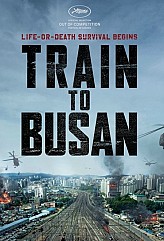Baahubali 2: The Conclusion
Home > Visitor Columns

Behindwoods.com isn't responsible for the views expressed by the visitor in this column. The visitor claims that this column is his/her own. If the column infringes any copyrights that you hold, please email us at columns@behindwoods.com.
Mild Spoilers!!
The most anticipated and hyped film of the year has arrived. Follow up of the first film in the mythological/fantasy drama genre opened in a record number of screens worldwide. In short, writer & director SS Rajamouli had sky high expectations to satisfy.
Cinematographer K K Senthilkumar's work in the film is nothing short of extraordinary. The scale of the story, surreal settings, the lightings especially in the first 30-40 minutes of the second half, full scope of performances and high octane action sequences are brought to life on the celluloid with meticulous planning and great skill. Special mention to the camera angles of the climax stunt sequence.
Art Director Sabu Cyril and his sketches functions as the key to unlock the mind of Rajamouli. Kingdom of Mahishmati sitting amongst clouds in all its majesty sucks you into the world of Baahubali. For films of such mythical quality, a sense of place is one of the major pillars on which the entire structure rests and the production designer has outdone himself in the second outing.
Music by MM Keeravani/Maragathamani adds to the film and the narrative. Couple of songs provide the 'have heard it somewhere' feeling but the understanding of the vision of the director is quite evident. Background score has some highlights including a fully fledged orchestoral/Symphonic arrangements towards the end of the film. But more layers to the score could have added more depth to the scene and would have conveyed the differing shades of the characters in the royal family better. Music from Lord of Rings is used in the BGM just before the Oorae Ooril song.
Sound mixing and editing multiplies the impact of the imagery on the audience and the war sequences, other pivotal drama sequences like the interval block are elevated immensely. The balance between music, dialogues and effects was also achieved.
Stunt/action choreography by Peter Hein especially the war sequence in the first half is heavily inspired by the Lord of the Rings, The Two Towers (2002). The battle of Helm's deep and the strategic placement of the kingdom of Anushka akin to a valley is recognisable. Traces of Battle of Plennor Fields can also be seen in the action choreography. The baled propelled chariot which Rana uses ( also seen in part 1) defying laws of physics could have been avoided. But the vision of the Writer & Director executed by Peter Hein especially the climax stunt sequence is a sight to behold. Barring the tree slings, the penultimate action piece is a spectacle never before seen on Indian screens.
Part of the criticism for the climax stunt sequence arises on account of not fully understanding the mythological/fantasy setting of the story and characters. Baahubali was climbing and jumping mountains with ease and Bhallala deva killed and stopped an ox with bare hands in the first part. The kind of stories we hear about kings and their myths can still be seen in museums. Their armour, weapons they wield are near impossible for a normal human to wear and swing. People forgot the much raved interval scene in first part where Baahubali stops the mammoth statue from falling single handedly. A new benchmark for larger than life stunts is set for Indian Cinema.
The VFX, CG play a pivotal character in the films like these and they very well hold the key that decides the success of the film. The effects here are far more huge and detailed than the previous part. Except for a few tacky shots, visual effects is by far the best as far as Indian films go. The statue portions in the climax may seem like a sore thumb but the VFX team has excelled to provide the 'epic' sense for the movie.
The performances are what gives life to the world of Baahubali. Prabas as the titular character does justice to his part. The elder Baahubali/Amarendra Baahubali was splendid and majestic whereas Prabhas was not very endearing as Mahendra Baahubali. When proceedings cut to present day, the rage that drives him is not portrayed convincingly. His arch nemesis played by Raana Dagubati is impactful. His lust for throne, power and his vengenceful hate for Baahubali is dramatically played by Raana. Special mention to the climax portions.
What makes Baahubali work is not just because of the leads but the fantastic supporting characters lead by Sathyaraj. Katappa will rank among one of the best roles of his career alongside Amavaasai. The wide array and spectrum of skills in his repertoire is summoned by the auteur in this feature film. Loyal servant, loving uncle, rib tickling friend & a tortured soul. The veteran actor aces everything to near perfection. Ramya Krishnan as Sivagami also holds the screen with the presence of her eyes. She adds amazing depth to the drama that happens in the Mahismati Kingdom and the way she carried herself as the King's Mother is eye popping. The continuity she brings to the performance is praiseworthy. These two performances and characters are the key ingredients to the success of this story.
Nasser pretty much does justice to every character he plays. But the twin shades to his character made for commercial reasons mellowed down what could have been one more intriguing character to the story. Nasser's delivery shows his prowess over the language and stage. Anushka has a meaty role to play in the second part as Devasena who is courageous, principled and persevering. Anushka outdoes Tammanah's role from the first part and carries the role with ease showcasing her talents as an actress.
The dialogues by Madhan Karky are a huge asset to the film and is even more detailed than part one which managed to hook the audience to the narrative. The Story by Vijayendra Prasad rooted in Indian Mythology and epics like Mahabaratha is what gives the movie the pan Indian appeal. The characters are so well defined and their arcs are what propels the story forward.
The screenplay and direction by SS Rajamouli deserves a standing ovation. The treatment of the story showcases the story narrator that he is both visually and screenplay wise. The film is sprinkled with moments for masses and perfectly packaged to provide entertainment for all sections of audience. The linchpin quality of a great filmmaker is not to exceed the boundaries of the characters when set. Best example for the same is why Kattapa killed Baahubali. For the hype, it was never glossed nor was any gimmicks used. The explanation even though may sound underwhelming remained true to the narration and characters which is also one of the highlights of the film where the characters are treated without exceeding their cornerstone qualities.
There are certain flaws which are visible in the film. When it comes to the sequel, the first part had ended on a high note as a cliff-hanger but the second part didn't start off more intensely as one would expect. But it was packaged as an independent film filled with comedy and romance with the story moving as an undercurrent culminating to the interval point. The film borrows heavily from the Lord of the Rings from the designing of the battles, the colours and visuals even though the story was rooted in Indian Mythology.
Some highly visible lip sync problems are distractive since some scenes are shot only in one language. Bit more intensity & footage could have been spent on how Sivagami's character reacted in certain situations and a bit more time could have been spent on the events within the royal family which would have provided more drama to the proceedings. The placement of romance portions in second part would have suited better in the first part as the Tamannah portions there was downright bad. In response to criticism for the objectification of Tamannah in the first part, feminist themes in the sequel appeared to be overdone. Considering the creative imaginative world that the movie was set in, most of songs were placed in a traditional way.
All of these flaws can be overlooked because of the huge achievement this film turns out to be. From the impressive title cards, the tone and genre of the film is set in Rajamouli's vision and he inspires many film makers to dream of such magnitude. From the point of film market/economics, Baahubali 2 is a game changer and the movie is all set to become the first Indian movie to gross 1000 crores worldwide expanding and providing more scope for big directorial ventures which will rival international films. Undeniably SS Rajamouli and team will go down in history as the people who laid foundation for such films.
Baahubali 2: The Conclusion is Jaw dropping in scope and ambition which raises the bar very high for Indian Cinema. This motion picture is grand entertainment 'commercial' Cinema. Baahubali 2 intrigues and engages the audience on a whole new level unseen in Indian cinema halls. The grand vision of SS Rajamouli is astounding, boundary pushing and enthralling worthy of accolades. Baahubali 2 is a milestone for Indian Cinema in many ways.
Must be experienced in the cinema theatres!!
sriramanadvocate@gmail.com
Please send your column to columns@behindwoods.com.

OTHER LATEST VISITOR COLUMNS
RELATED NEWS
- Baahubali 2 to beat the lifetime box office collections of this biggie!
- After Baahubali 2 and Mahabharata, yet another historical epic on a budget of 500 crore!
- Bad News: Baahubali 2 shows stopped in this country!
- Close: Dangal chasing Baahubali 2?
- ''Very happy to see you receive the honour..'' - AR Rahman to Baahubali 2 music director!
- Baahubali 2 becomes the 3rd highest in USA history!


